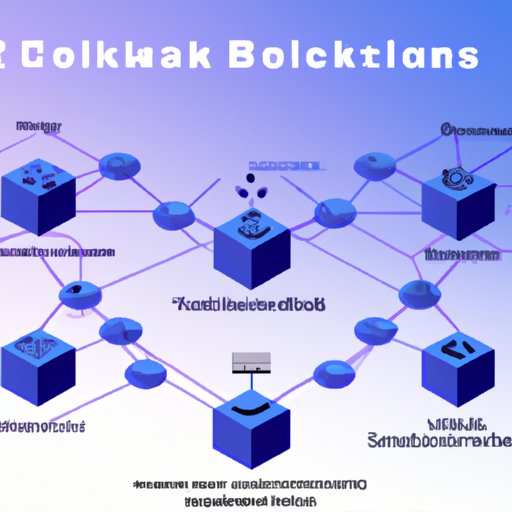Introduction
Blockchain is a type of distributed ledger technology (DLT) that has been gaining popularity in recent years. A blockchain is a digital ledger of transactions that is maintained by a network of computers. It is designed to be secure, transparent, and immutable, meaning that once a transaction is recorded on the blockchain, it cannot be modified or deleted.
Explaining Blockchain Technology
The decentralized nature of blockchain technology is what sets it apart from other types of distributed ledger technology. Unlike centralized databases, which are managed by a single authority, blockchains are managed by a network of computers, or “nodes”. Each node maintains a copy of the blockchain, and all nodes must agree on any changes to the ledger before they can be made.
A useful analogy to explain blockchain technology is to think of it as a spreadsheet that is shared among a group of people. Whenever someone wants to make a change, they have to get everyone else’s approval first. This ensures that everyone has the same version of the spreadsheet and that no one can tamper with it.
Types of Blockchains
There are two main types of blockchains: private and public. Private blockchains are typically used for enterprise solutions, where only certain users are given access to view and make changes to the blockchain. Public blockchains, on the other hand, are open to anyone who wishes to view or make changes to the blockchain. Bitcoin and Ethereum are examples of public blockchains.
Consensus Mechanisms
In order for a blockchain to function properly, there must be a consensus mechanism in place. A consensus mechanism is a set of rules that all nodes must agree upon before a transaction can be added to the blockchain. Examples of consensus mechanisms include Proof-of-Work (PoW), Proof-of-Stake (PoS), and Delegated Proof-of-Stake (DPoS).
Proof-of-Work requires miners to use their computing power to solve complex mathematical problems in order to add a new block to the blockchain. Proof-of-Stake requires users to stake a certain amount of coins in order to be eligible to add a new block to the blockchain. Delegated Proof-of-Stake allows users to vote for delegates who will then be responsible for adding new blocks to the blockchain.
Applications of Blockchain Technology
Blockchain technology has a wide range of applications, from financial services to supply chains. In the financial sector, blockchain technology is being used to facilitate payments and simplify international money transfers. In the supply chain industry, blockchain technology is being used to track the movement of goods and ensure that they are not counterfeit. Blockchain technology is also being used to create cryptocurrencies, such as Bitcoin and Ethereum, which are digital currencies that are not controlled by any government or central bank.
Benefits and Risks of Using Blockchain Technology
Using blockchain technology offers a number of potential benefits, such as increased security, transparency, and efficiency. By utilizing a decentralized system, blockchain technology eliminates the need for an intermediary and allows for faster and more secure transactions. Additionally, the immutability of blockchain technology ensures that data cannot be altered or deleted.
However, there are some risks associated with using blockchain technology. For example, due to its decentralized nature, there is no single entity responsible for maintaining the security of the blockchain. Additionally, there is a risk of 51% attacks, where a malicious actor gains control of more than half of the network’s computing power and can manipulate the blockchain.
Conclusion
Blockchain technology is a revolutionary new way of storing and transferring data. It offers a secure and transparent way of conducting transactions, and has a wide range of potential applications. While there are some risks associated with using blockchain technology, the potential benefits far outweigh them. As the technology continues to evolve, we can expect to see more innovative uses of blockchain technology in the near future.
(Note: Is this article not meeting your expectations? Do you have knowledge or insights to share? Unlock new opportunities and expand your reach by joining our authors team. Click Registration to join us and share your expertise with our readers.)
